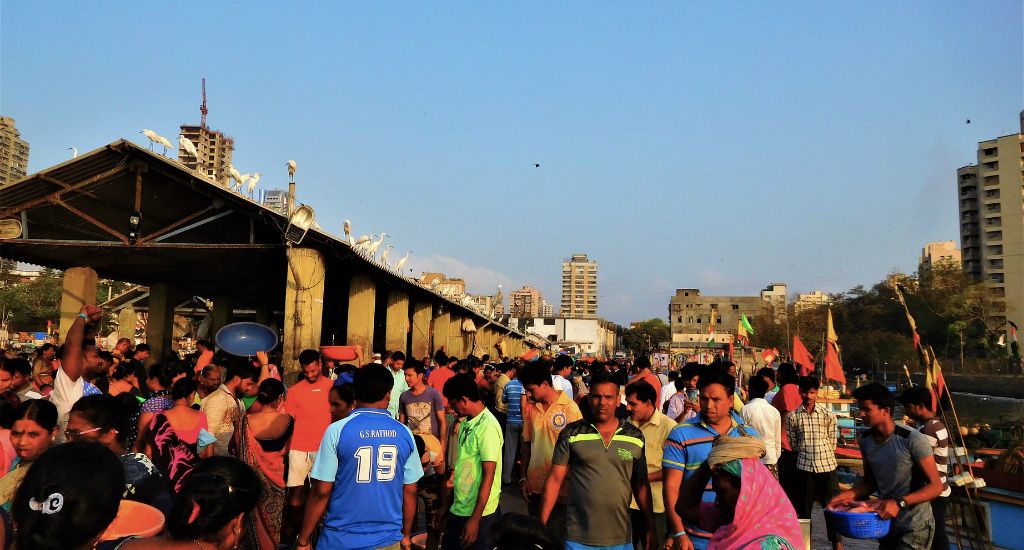
Migrants live their Mumbai dream at Sassoon Docks
Thousands from across India's rural landscape arrive and work at Mumbai’s oldest wet dock, which is one of the nation’s biggest exporters of sea fish.

Thousands from across India's rural landscape arrive and work at Mumbai’s oldest wet dock, which is one of the nation’s biggest exporters of sea fish.
The smell of the sea and fish offal meets the nose way before the eyes catch sight of the Sassoon Docks.
A flotilla of fishing boats is moored hull-to-hull alongside the wharf at any point in time in the oldest wet dock of Mumbai, much like the packed-like-sardines megapolis of more than 21 million people.
Thousands of men and women work in a factory-like assembly – unloading the fresh catch from the trawlers’ ice-filled holds and hauling the yield to the adjoining dock, where mounds of fish are auctioned, cleaned, packed in ice boxes, and sent off for sale.
The best of the lot goes abroad.
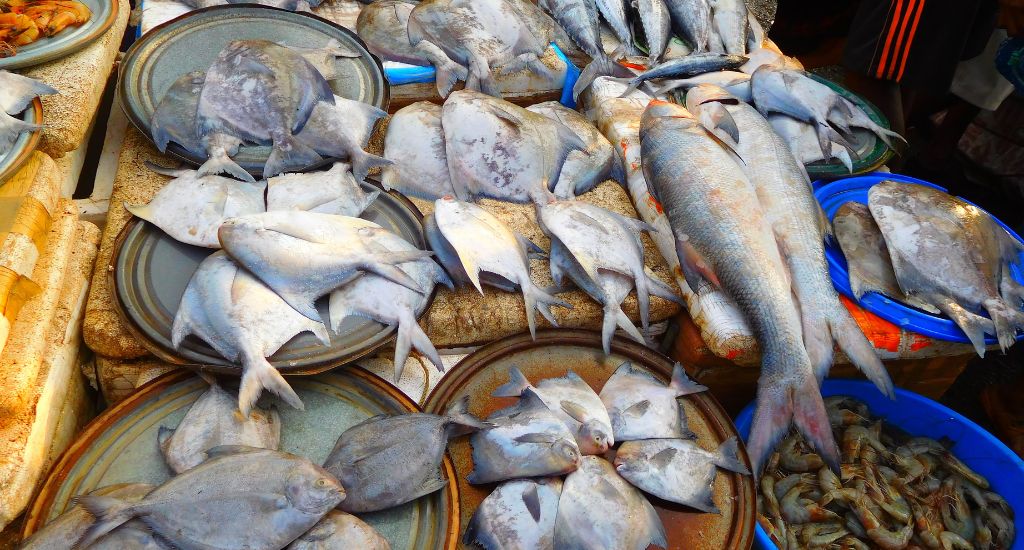
Most of India’s fish export happens from Sassoon Docks, but not all good fish swim off to supermarket frozen food aisles. Some stay back and are sold by a gaggle of fisherwomen, calling attention to their wide, crates filled with Bangda (Indian mackerel), Surmai (Indo-Pacific King Mackerel or Seer fish), Halwa (pomfret or Indian butterfish), Bombil (the iconic Bombay Duck) and the like.
The noise assaults the ears. The fisherwomen, the auctioneers, the overseers shouting commands, the bargain-hunters haggling over the price, the hooting of boats, the spitting of hot oil when fresh fish meets the pan in small eateries that cater to the labourers.
What’s unmissable is the variety of languages spoken by the people gathered there, although the lingua franca is the typical Bombaiya Hindi interspersed with Marathi. The dockyard embodies the essence of Mumbai – a cosmopolis chasing the common goal of working to live, living to work.
This is the melting pot of migrant labourers, all working together in a dockyard built in 1875 by a Jewish immigrant from Baghdad who came to Bombay chasing his own dreams. He was businessman David Sassoon.
The dockyard represents the Mumbai of yore, a cluster of fishing villages before the British changed the landscape and it turned into a city of dreams. The dream of a better life has drawn people from across the country – mostly rural folks from interior Maharashtra, Karnataka, Andhra Pradesh, Tamil Nadu, Bihar, Uttar Pradesh. The list goes on.
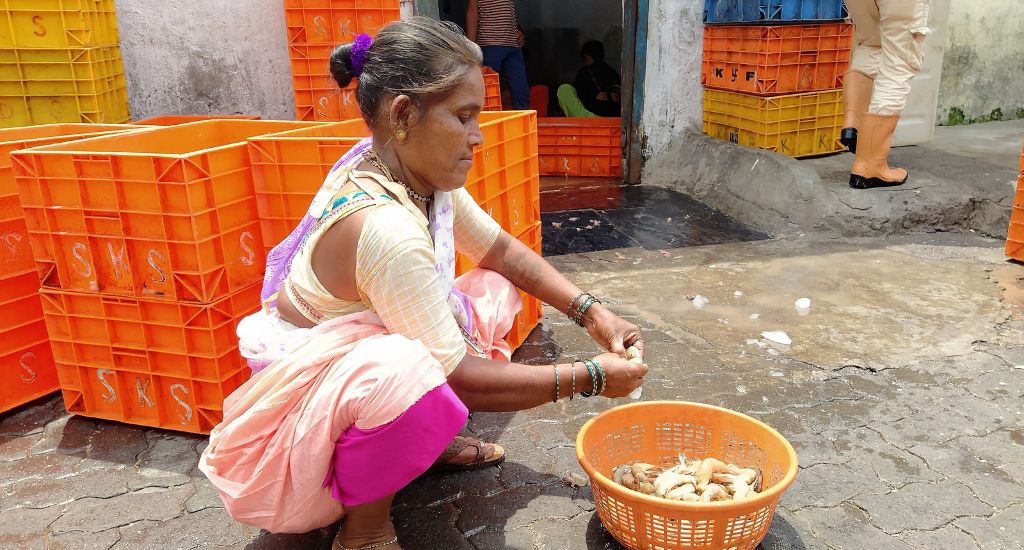
In this fishing port of the city’s dog-eat-dog real estate, they work side by side with the native Koli people, the original fisherfolk of the area. But each community has been assigned particular tasks to avoid competition. No overlap. No friction.
Villagers from interior Maharashtra work on the trawlers – catch, load, and store fish. Migrants from Bihar and UP load crushed ice on the boats. Tamil workers transport water and diesel in colour-coded containers to the boats. Banjara women from Karnataka clean prawns. Koli women buy fish in bulk and sell them to locals and retailers.
Koli women are experts in cleaning and cutting fish. Like Bharti Patil, 55. She makes a living by quartering fish at the docks, charging anywhere between Rs 20 and Rs 300 apiece, depending on the size and species.
The dockyard comes alive at the crack of dawn. But for night guards like Namdev Panmand, it’s time to go home and sleep.
He travels each afternoon from his rented room in Badlapur beyond the city limits to the docks to guard containers filled with fish. A native of Wadzire village in Maharashtra, he began as a cleaner “a long time ago”, switched to pulling carts, and then became a guard. He has an assistant working with him now.
Most newcomers begin with small chores.
Raju Rathod, 37, came from a village in Karnataka three decades ago with his aunt and uncle. He works as a porter hauling crates of fish from the boats and makes just about enough to afford his son and daughter a good education. His children go to college and the family lives at Ambedkar Nagar, a nearby slum.
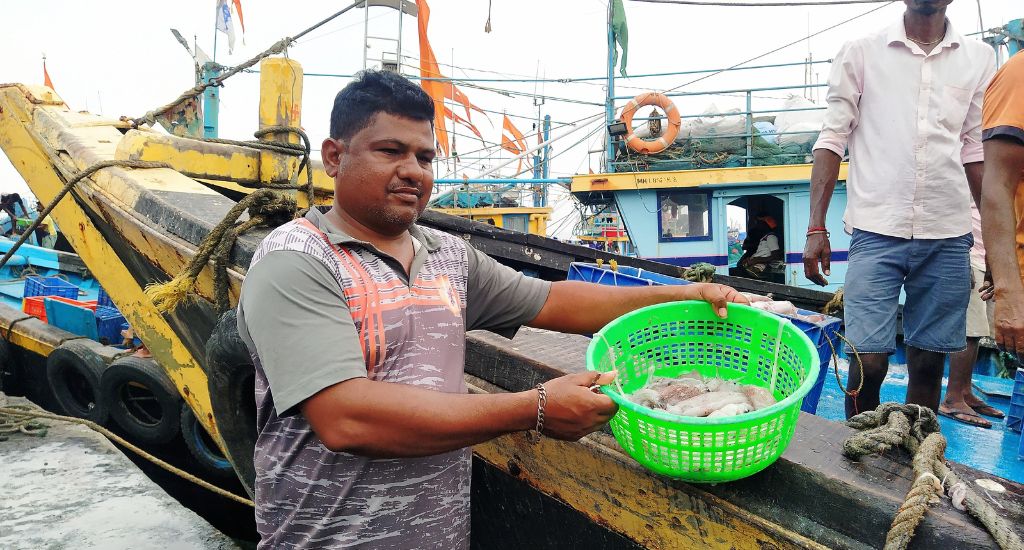
Raju visits his ancestral home every year for a ceremony that costs a few lakh rupees. He says he can afford it.
Laxmikant Varma from Unnao in Uttar Pradesh breaks ice slabs that arrive from factories in Panvel. He loads the crushed ice into trawlers.
“There are five of us handling each cart. Each of us earns about Rs 500 to Rs 600 a day,” he said.
Truck driver Hameed Khan has been ferrying fish from the docks to Mangalore, a 12-hour drive, every fortnight for the past eight years. His truck is among a fleet of more than 50 that pulls out of the docks carrying fish.
People from the nomadic Banjara community have found a firm footing in the dockyard. Banjara women are easy to identify because of their attire – colourful and decorated with mirror work. They are seen peeling, deveining, and cleaning prawns and shrimp.
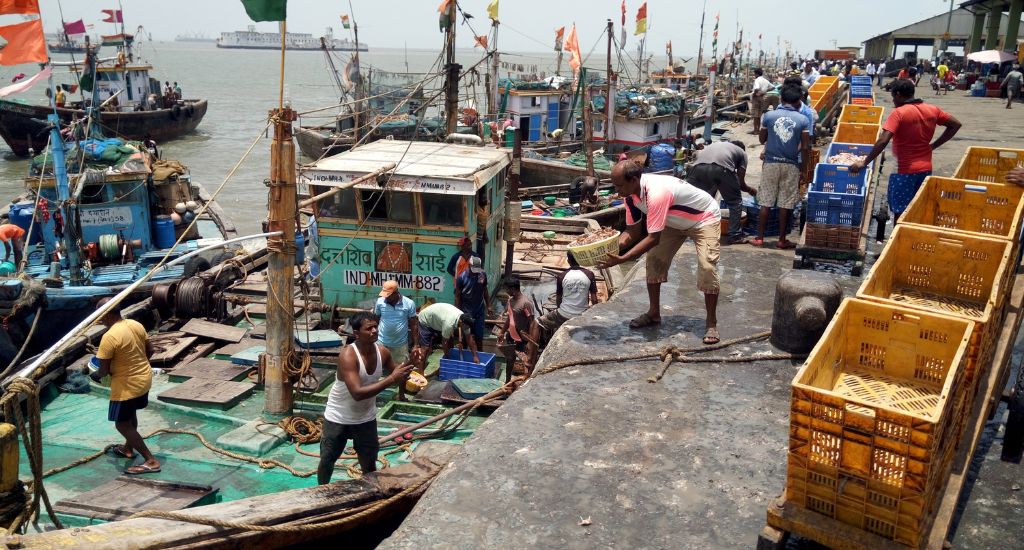
Among them is Kamlibai Chavan, 50, who cleans about 25kg a day. She lost her husband years ago and two of her children are studying in her village in Karnataka.
Auctioneer Jayram Rathod, also a Banjara from Karnataka, began as a deckhand on boats and gradually moved to auctioning. He has been doing that for the past eight years, earning 10 per cent from the sales. He takes home about Rs 1,000 on a good day.
Monsoons aren’t good days. All activities in the docks come to a halt for three months in the wet season. Most workers move out to do sundry jobs in the city. Some take a vacation to meet families back in their native villages.
The lead image at the top shows the morning buzz of buyers, sellers and auctioneers (Photo by Gajanan Khergamker)
Gajanan Khergamker is a Mumbai-based independent writer, solicitor and filmmaker.